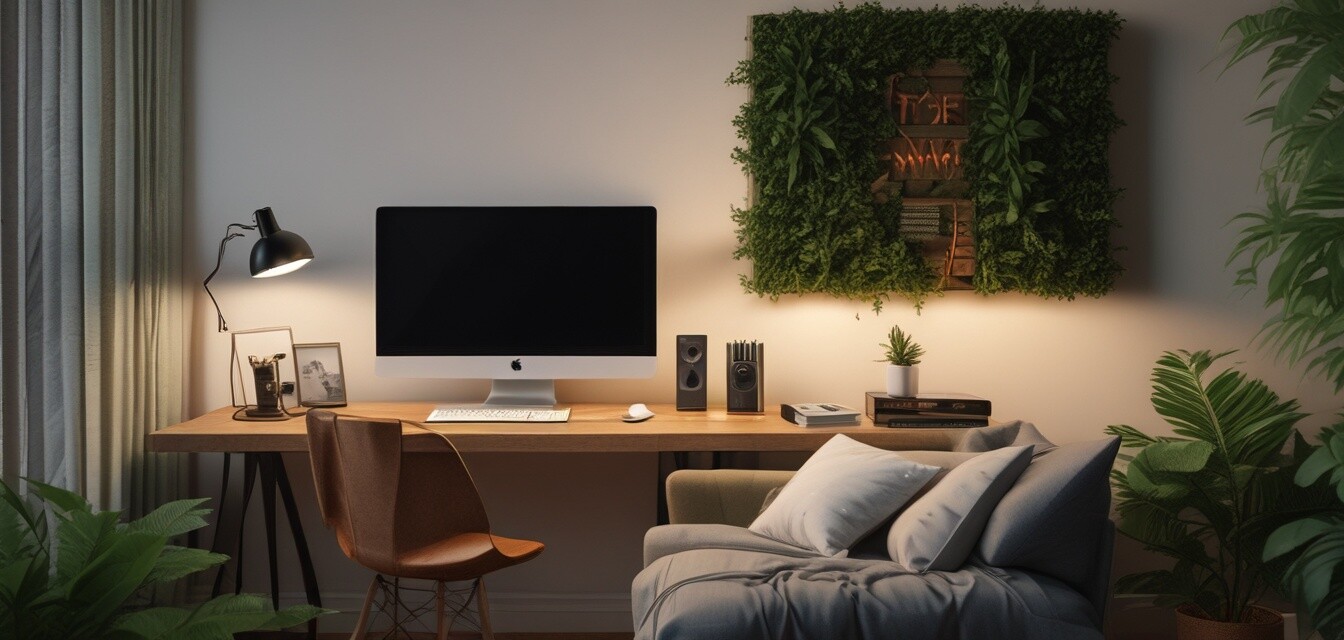
Easy ways to enhance acoustic privacy in your office
Key Takeaways
- Utilizing acoustic panels can significantly reduce noise distractions.
- Strategically placed rugs and textiles can improve sound absorption.
- Creating a multi-room workspace setup enhances privacy between work areas.
- Consider indoor plants for additional sound absorption and a calming atmosphere.
- Incorporating white noise machines may provide a mask for unwanted sounds.
In today's fast-paced world, maintaining acoustic privacy within your home office is more important than ever. Noise distractions can hinder concentration and affect productivity. Whether you're in a small studio apartment or have a dedicated office room, there are effective strategies you can incorporate to enhance your acoustic privacy easily. In this article, we delve into practical tips and tricks that will enable you to better manage sound levels in your workspace.
1. Use acoustic panels
Acoustic panels are specialized materials designed to absorb sound waves. They can be mounted on walls or ceilings to reduce echoes and noise. Below is a comparison of various types of acoustic panels you may consider:
| Type of Panel | Material | Sound Absorption Rating | Best Use |
|---|---|---|---|
| Foam Panels | Polyurethane Foam | Medium | Home Studios |
| Fabric-Wrapped Panels | Fiberglass | High | Office Spaces |
| Wood Panels | Wood Composites | Low | Modern Aesthetics |
2. Incorporate rugs and soft furnishings
Adding area rugs and soft furnishings can make a substantial difference in reducing noise levels:
- Area Rugs: Thick rugs placed under desks can absorb sound effectively.
- Curtains: Heavy drapery can help dampen sound from outside.
- Furniture: Incorporating soft furniture can help lessen echo.
3. Create a multi-room workspace
If feasible, setting up a multi-room workspace can help improve acoustic privacy. This could mean splitting your work into different sections or rooms:
- Designate specific areas for focused work and collaborative work.
- Keep personal calls or video meetings in a more isolated space.
- Utilize partitions to separate different work areas within the same room.
4. Use indoor plants
Indoor plants not only improve air quality but also serve as natural sound absorbers. Here are some plants you might consider:
- Rubber Plant: Great for sound insulation and easy to care for.
- Peace Lily: Not only beautiful but effective at improving acoustic privacy.
- Spider Plant: A hardy option that adds to your decor.
5. Consider white noise machines
White noise machines can mask distracting noises effectively. Here's how to choose one:
- Look for machines with adjustable volume levels.
- Consider models that offer a variety of sound options, from rain to ocean waves.
- Portable options are available if you need flexibility.
Conclusion
Improving acoustic privacy in your home office can significantly enhance productivity and focus. Implementing these simple strategies will help create a more conducive work environment. In addition to the tips mentioned above, exploring our DIY tips and tricks can also inspire further enhancements to your workspace. Remember, your office is a reflection of your productivity—ensure it works for you!
Beginner's tips
- Start with one or two acoustic panels and evaluate their effect.
- Try using a combination of rugs and curtains to optimize sound absorption.
- Engage in DIY projects to customize your acoustic solutions.